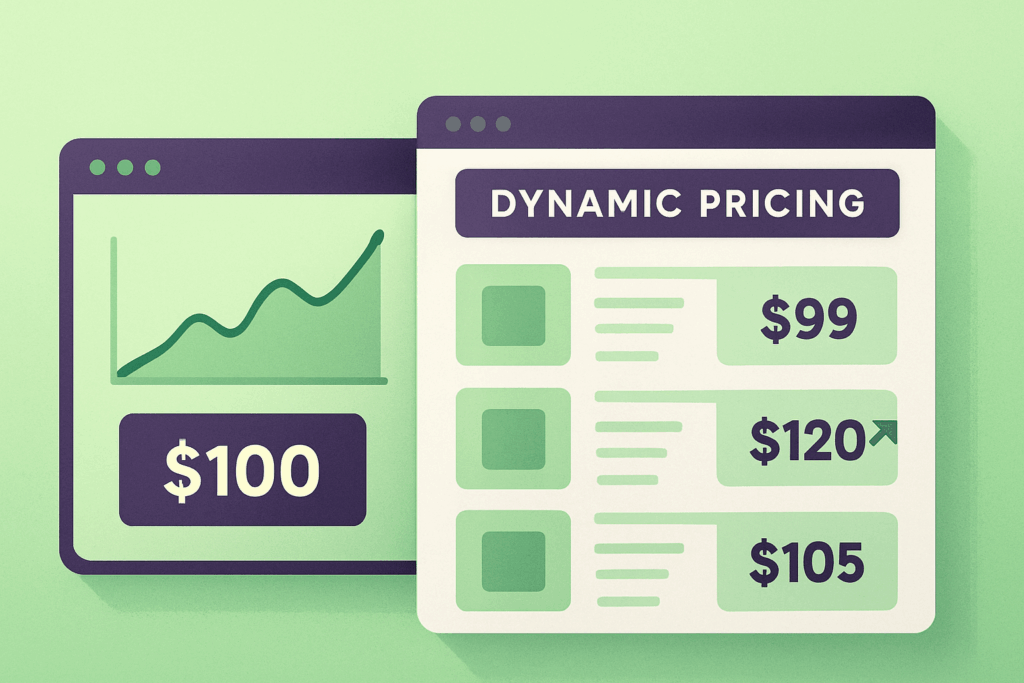Are we misusing the term “Total Revenue Management”?
Total Revenue Management” is on everyone’s lips. It’s mentioned in conferences, executive committees, strategic plans...
See more
Dynamic Pricing is not a risk, it is an opportunity. Understand its advantages and why failures often stem from poor implementation.
In some industries, dynamic Pricing has been standard practice for a long time. In others, it’s still off the table. And some claim they’ve failed because « it just can’t work ». Dynamic Pricing can be intimidating or enticing, creating opportunities, but also stress. The market may not be ready, there are risks involved, companies may fear being seen as opportunistic by their customers… or, quite simply, they may just not know how to implement it.
Yet moving from fixed pricing to dynamic pricing offers clear benefits, for both businesses and their customers. And the few failures observed here and there are hardly surprising.
In industries suited to yield management, those with a perishable product (a hotel night, a train ticket, a show), limited capacity, fluctuating demand, and a booking process, the key challenge is to find the right balance between occupancy rate (hotel, train or venue) and average price, in order to maximize the product of the two: revenue.
In this context, offering a single fixed price for a given date, set at the start of sales and potentially long in advance, carries a triple risk:
Dynamic Pricing can neutralize all these risks. There’s no need to hit the target perfectly, prices can be adjusted. Early-bird rates can encourage advance bookings and ensure minimum occupancy, while keeping space for late-booking customers willing to pay more.
Managing occupancy through measured, gradual price adjustments creates opportunities to increase both filling rates and average prices. Revenue gains of 3–5% are achievable using this lever alone.
It cannot be emphasized enough: prices have never been as low as they are with dynamic Pricing. They can start very low because there’s always the possibility to adjust them later. Railway operators provide a clear example: initial fares are generally much lower than before dynamic pricing was introduced, not every day, not on every train, but consistently lower on average.
Customers may complain when prices seem too high, as with SNCF or Eurostar. But they can also be frustrated when tickets sell out too quickly, often because initial fares were too low. Book early, stay flexible with your travel times, and you’re far more likely to find an affordable ticket under a dynamic Pricing model than with fixed prices.
Ultimately, the customer is the judge. If it’s too expensive, they take the bus, the plane, drive, or carpool. No one is held hostage by prices.
Airlines, hotels, car rentals, cruise lines and many other sectors now use dynamic Pricing. They have democratized tourism, making it more accessible with attractive entry, level prices, something that would not have been possible without dynamic Pricing.
Those who believe that simple promotions or special offers are enough to provide low prices often fail to realize that they are merely recreating, through discounts and deals, what dynamic pricing does naturally: adjusting prices to actual demand, without the need for endless, complex promotional campaigns to set up, communicate and distribute.
The media loves stories portraying dynamic pricing as a failure, concerts (Oasis), retail (Casino), cinemas (EasyCinema). We have analyzed each of these cases and shown that it was almost always the implementation that failed, not the principle of dynamic pricing itself. We have delivered conferences on the topic, published articles, and moderated roundtables…
When dynamic Pricing is well-designed and carefully managed, following principles of fairness and moderation, it proves highly effective. It ensures strong occupancy rates (with attractive prices for customers) while also capturing a few extra points on average price, crucial for operator profitability. If it didn’t work, this practice would have been abandoned long ago.
Keywords: dynamic pricing, yield management, revenue management, pricing strategy, flexible pricing, demand management, revenue optimization
Discover how to implement dynamic pricing effectively to maximize your revenue, optimize occupancy rates and offer attractive prices to your customers.
Total Revenue Management” is on everyone’s lips. It’s mentioned in conferences, executive committees, strategic plans...
See moreEvery hotelier creates a different experience, atmosphere and emotion. Yet many continue to base their...
See moreLe secteur très concurrentiel de l’hébergement touristique, l’Hospitality, est en constante évolution. Pour se démarquer...
See more